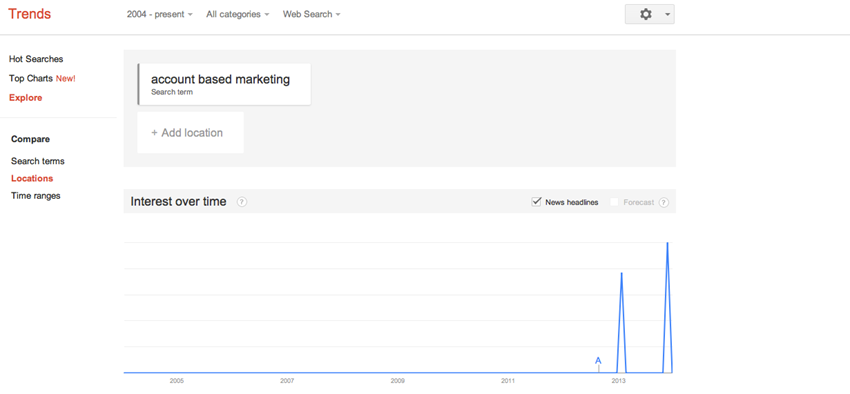 Business 2 Community
Business 2 CommunityThe Untold and Fascinating History of Account-Based Marketing
We’ve spent a lot of time discussing account-based marketing (ABM) and advertising strategy, but I’d like to devote a few posts to returning to the basics.
Today, we’re launching a new blog series that will explore ABM from the very beginning, from simple definitions to measurement and optimization. If you’ve ever found yourself wondering, “what is account-based marketing?” or “how can account-based marketing impact my business?,” then this series is for you.
Let’s start out by exploring some of the history of ABM, and then we’ll get into how it works.
The History of Account-Based Marketing
Account-based marketing has its roots in the 1990s, when B2C and B2B companies alike began to realize the need for more personalized marketing.
If you’re up on your marketing reading, you may remember that Don Peppers and Martha Rogers published their landmark The One-to-One Future in 1993, which forecasted the movement from mass marketing to the more 1:1 marketing that we know today. As consumers’ began to crave more personalized buying experiences, many marketers turned to account-based marketing to meet those needs.
The phrase “account-based marketing” was coined in 2004 by ITSMA, though many B2B companies had been implementing ABM strategies for years in one capacity or another.
However, it wasn’t until recent years that ABM really began to catch on in the B2B industry due to the shifting emphasis on demand generation and inbound marketing — and the increasing number of vendors offering more robust ABM solutions. In fact, according to Matt Senatore, Research Director at SiriusDecisions, account-based marketing generated enough global search traffic in 2013 to appear on Google Trends.
Here is the chart that Matt references in his blog:

So What Is It, Exactly?
As you can probably guess, account-based marketing focuses on marketing at the account level, rather than at the lead level. The traditional sales funnel starts by looking at all of the channels that your customers may be engaging on, and then attempts to target customers from there.
Account-based marketing, on the other hand, flips the funnel on its head. Instead of starting with channels, an ABM strategy begins with identifying and targeting your key customer accounts.
Only then do you reach out using targeted advertising via the channels that your buyers are actively using, such as mobile, social, display, and video.
Think of it this way: how many stakeholders are typically involved in your average B2B purchasing decision? The answer isn’t just one.
The length of the sales cycle is growing longer as more and more decision makers are becoming involved in B2B purchases, which is why single-lead marketing is no longer the most effective or the fastest method to reach a sale.
Instead, companies are turning to account-based marketing to place their marketing messages in front of all of the decision makers within an account.
How Does It Work?
Account-based advertising uses digital (IP or cookie-based) targeting to reach specific accounts. You can integrate an ABM platform with your CRM or marketing automation tool to run campaigns targeted toward the accounts already in your database.
This gives you the ability to run multi-channel campaigns by choosing the ads you want to show your target audience across mobile, social, display, and video — then engage your prospects on their terms.
Not only that, but you can now finally understand which message resonates the most with your target audience — and get the data to back it up — with A/B testing on your creative in near real-time.
Account-based technologies have seen great success for two primary reasons:
ABM can help you engage your customers on their terms, i.e. using more digital channels than email and phone calls.
AMB makes it possible to engage not only the lead but the entire account, which means you can now do account-based marketing at scale.
Today’s account-based marketing technologies allow you to market across personas, sales stages, campaigns, or statuses in your CRM, and go from one-channel marketing to multi-channel nurturing, instantly.
Pretty cool, huh? As the one-size-fits-all approach to marketing continues to go out of style, account-based marketing has become a reliable, must-try strategy to personalize the buying experience with highly-targeted messaging.
Stay tuned for the next post in our Account-Based Marketing 101 series!
This post originally appeared on the Terminus Blog.
Bonus: If you’d like to know more about Account-Based Marketing, you should download “The Beginner’s BluePrint to Account-Based Marketing”
This article was syndicated from Business 2 Community: The Untold and Fascinating History of Account-Based Marketing
More Sales & Marketing articles from Business 2 Community:

